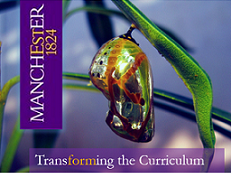Transforming Human Remains into a Habitat for Sea Life By Natasha van Bentum
This article is about a recent “living reef memorial”, created in honour of the author’s partner of fifty-one years, artist Henri van Bentum (1929-2022)

Introduction
While traditional cremation has a high carbon footprint, in the case of Henri van Bentum (1929-2022), the artist’s lifetime footprint on Earth was light as a feather.
Henri was one of the early “Provo” environmentalists in the Netherlands. He never owned a vehicle or property, and lived modestly.
Any emissions from the cremation process were more than offset by his humble way of life spanning nine decades.
Lifelong Love of the Sea
The sea was a constant theme in Henri’s life. He could swim before he could walk. Born in Amsterdam in 1929, Henri’s father tossed him gently into a canal at the age of 18 months, where an uncle awaited his ‘landing’.
For generations, Henri’s ancestors had performed this typically practical and common-sense tradition. There are so many canals in Amsterdam, it was vital for young children to learn how to swim, in case they fell in.
As a young boy, several of Henri’s most vivid memories were of colourful stories told by his uncle (Oom) Toon van Bentum. Oom Toon had been a sea captain in Sumatra, Java, Borneo, the Moluccas, and New Guinea.
When he was in his 70’s, Henri helped organize and participated in eco-friendly snorkelling expeditions to the Solomon Islands, Fiji and Indonesia.
He had a great love for all creatures of the seven seas. Over a period of five years before his death, Henri wrote five children’s books, three of which feature coral reefs.
Henri had hoped to be buried at sea, but these days applications for sea burial approval are cumbersome and lengthy procedures, with no guarantee of success.
However, something even better arose, not a traditional burial at sea, but a living reef memorial.
Living Reef Memorial
‘Canada doesn’t often spring to mind as a place to snorkel or scuba dive, but Jacques Cousteau rated three of the dives on Vancouver Island in the top ten in the world.’
In the spring of 2023, an artificial reef containing Henri’s ashes was deployed into the Salish Sea, just of the coast of Vancouver Island, Canada, at Spring Bay. This site is a respected snorkelling and scuba diving spot, although it’s renowned for its strong currents, and is only safe at slack tide.
Thanks to the organization Living Reef Memorial, “Henri’s Reef” was created from his cremated ashes, crushed oyster and other seashells, low-alkaline cement, and sand. It was deployed 175 metres off the coast, into a depth of 17 metres, on May 27, 2023.

Henri’s reef before deployment, showing its ceramic plaque which reads:
Henri van Bentum, 1929-2022
Heldhaftig, Vastberaden Barmhartig
(Valiant, Steadfast, Compassionate)
Just some of the underwater life found in Spring Bay, with its cold and strong currents are: frosted nudibranch, painted anemone, pink-tipped aggregating anemone, giant plumrose anemone, shiny sea squirt, three types of chiton, plus three types of dorid (leopard, Heath and Hudson), clown nudibranch, mottled star, blood star, green urchin, red urchin, purple urchin, and three kinds of sea cucumber. Already Henri’s reef has become home to many underwater creatures.
There are two options available to choose from: either a community reef, shared with four others, or an individual reef. Henri’s is part of a community reef.
I only learned about the Living Reef Memorial opportunity after Henri left us, but I know he would have delighted in the idea.

Artist Henri van Bentum (1929-2022)
Natasha van Bentum
Henri’s partner of 51 years
July 2023
Victoria, British Columbia, Canada

